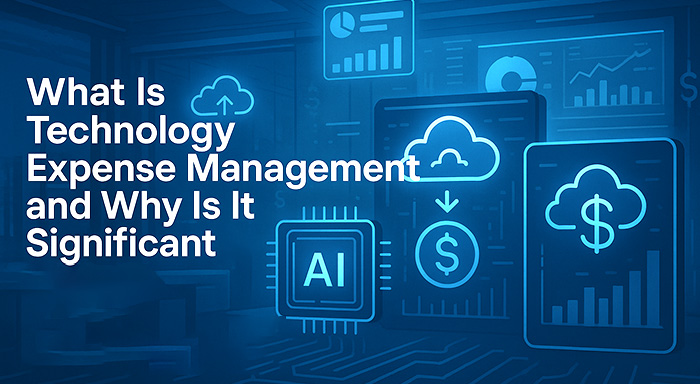In the rapidly evolving landscape of database services, the integration of gadget getting to know (ML) and synthetic intelligence (AI) is ushering in a brand new technology of efficiency, intelligence, and automation. This article explores the transformative impact of system studying integration on database services, showcasing how the synergy of AI and databases is revolutionizing information control, analytics, and decision-making techniques
The Marriage of Machine Learning and Database Services:
Automated Data Management:
Machine gaining knowledge of algorithms are adept at automating routine facts control responsibilities within databases. From statistics cleaning and normalization to indexing optimization, ML-driven automation streamlines techniques, reducing manual intervention and enhancing typical database efficiency.
2023, machine learning (ML) is a powerful enabler for Data Management, revolutionizing the way organizations handle and analyze vast amounts of data. ML, a subset of artificial intelligence (AI), offers numerous approaches to tackle Data Management demanding situations. With the ever-increasing “quantity, pace, and kind of statistics” being generated nowadays, traditional techniques of Data Management have emerge as inadequate. Machine learning techniques and use cases provide a solution by enabling automated data analysis and interpretation of complex datasets.
Predictive Analytics for Performance Optimization:
ML models can examine ancient database overall performance records to are expecting destiny tendencies and potential bottlenecks. This predictive analytics functionality allows for proactive performance optimization, making sure that resources are allotted successfully and stopping overall performance degradation before it happens.
With Predictive Optimization, Databricks tackles these thorny issues for you, freeing up your precious time to focus on using enterprise value together with your facts. By integrating MySQL to Databricks, you can further leverage the platform's capabilities. Predictive Optimization may be enabled with a single button click. From there, it does all of the heavy lifting.
For businesses looking to leverage predictive maintenance and other advanced data-driven strategies, utilizing a market intelligence platform can provide critical insights and analytics. These platforms help organizations stay ahead by offering comprehensive data analysis, which is essential for making informed decisions and optimizing operational efficiencies
Machine Learning for Kids: A Comprehensive Guide to Prepare Them for Future
Enhancing Query Performance and Optimization:
Intelligent Query Optimization:
Machine gaining knowledge of algorithms can examine query styles and execution plans, learning from historical facts to optimize queries mechanically. This shrewd question optimization improves reaction times, reduces latency, and complements universal database performance.
We’re excited to announce the Public Preview of Databricks Predictive Optimization. This capability intelligently optimizes your table data layouts for improved performance and cost-efficiency.
Predictive Optimization leverages unity catalog and lakhouse ai to determine the best optimizations to perform on your data, and then runs those operations on purpose-built serverless infrastructure. This significantly simplifies your lakehouse journey, freeing up your time to focus on getting business value from your data.
This capability is the latest in a long line of Databricks capabilities which harness AI to predictively perform actions based on your data and its access patterns. Previously, we released predictive I/o for read and updates, which apply these techniques when executing read and update queries.
Dynamic Indexing and Schema Recommendations:
ML fashions can dynamically suggest the advent or modification of indexes based on usage patterns. Additionally, they are able to provide insights into schema modifications to enhance information retrieval performance. These dynamic tips adapt to evolving data systems and utilization patterns.
In recent years, big data and machine learning has been adopted in most of the major industries and most startups are leaning towards the same. As data has become an integral part of all companies, ways to process them i.e. derive meaningful insights and patterns are essential. This is where machine learning comes into the picture.
We already know how efficient machine learning systems are to process the huge amount of data and based upon the task in hand, yield results in real-time as well. But these systems need to be curated and deployed properly so that the task at hand performs efficiently. This article aims to provide you with information on the model deployment strategies and how you can choose which strategy is best for your application.
Security and Anomaly Detection:
Behavioral Analysis for Security:
Machine studying excels in behavioral evaluation, making it a powerful device for figuring out anomalous activities inside databases. ML algorithms can analyze normal consumer behaviors and raise indicators or take preventive actions inside the presence of suspicious or unauthorized activities, bolstering database protection.
It is becoming difficult to identify Cybersecurity attacks. These attacks can originate internally due to malicious intent or negligent actions or externally by malware, target attacks, and APT (Advanced Persistent Threats). But insider threats are more challenging and can cause more damage than external threats because they have already entered the network. These activities present unknown threats and can steal, destroy or alter the assets or enterprises. Hence this is a serious concern for the enterprises to enable Anomaly Detection for Cyber Network Security.
Earlier firewalls, web gateways, and some other intrusion prevention tools are enough to be secure, but now hackers and cyber attackers can bypass approximately all these defense systems. Therefore with making these prevention systems strong, it is also equally essential to use detection. So that if hackers get into the network, the system should be able to detect their presence.
Today’s cyber-security is a new version of an arms race. Like traditional arms races, the balance of power and threat is constantly evolving. With each new type of cyber threat comes novel solutions to counter those threats. With each new solution comes a corresponding response from cyber-criminals. An on it goes….
Cyber-security isn't always a brand new imperative. The war to guard statistics and belongings has now been taking place for decades What is changing is the extent of risk and the escalating results of a a success cyber-intrusion.
Real-Time Threat Detection:
ML integration enables real-time hazard detection with the aid of continuously monitoring database sports. Any deviations from set up styles or potential security threats cause on the spot responses, safeguarding touchy statistics from unauthorized access, SQL injection assaults, or other protection vulnerabilities.
In today’s uber-connected world, cyber threats lurk around every corner, constantly evolving and seeking vulnerabilities. Executive boardrooms echo the murmurs of this pervasive threat, as organisations struggle with fortifying their defenses and safeguarding sensitive data. Traditional security measures, designed for a slower-paced era, often prove obsolete in this relentless attack landscape. This is in which actual-time threat detection emerges as a sport-changer, transforming how firms guard their assets and facts.
Imagine a security device that operates with the reflexes of a ninja, continuously tracking tens of millions of facts points in step with 2d, analysing them in real-time, and instantly responding to even the faintest trace of trouble. This is the essence of real-time risk detection. It leverages the electricity of statistics streaming and advanced analytics to offer an uninterrupted waft of actionable insights, empowering security groups to identify and neutralise threats before they are able to purpose havoc.
Advanced Analytics and Data Insights:
Pattern Recognition and Insights:
ML algorithms excel at pattern popularity, enabling advanced analytics on large datasets within databases. This capability unlocks hidden insights, tendencies, and correlations, presenting a deeper information of the records and empowering groups to make informed alternatives primarily based totally on actionable intelligence.
Advanced Analytics is the self sustaining or semi-self sustaining exam of statistics or content material using state-of-the-art strategies and equipment, normally past those of traditional business intelligence (BI), to find out deeper insights, make predictions, or generate pointers.Advanced analytic techniques include those such as data/text mining, machine learning, pattern matching, forecasting, visualization, semantic analysis, sentiment analysis, network and cluster analysis, multivariate statistics, graph analysis, simulation, complex event processing, neural networks.
All business intelligence techniques or tools can be used with advanced analytics; however, some more complex techniques are explicitly used for advanced analytics. For example, Complex Event Processing (CEP) analyzes concurrent events across multiple systems to detect trends or patterns. CEP can detect abnormal behaviors and immediately trigger an action to minimize the threat. An example of CEP is fraud detection, which monitors transactions and flags suspicious behaviors.
A recommender system is another complex advanced analytical technique that uses past behavior analysis to predict a person’s likes or dislikes based on examples such as browsing history or the type of shows they watch on a streaming service. CEP and the recommender system use multiple advanced analytical techniques to generate predictable outcomes for each system.
Natural Language Processing (NLP) for Query Understanding:
NLP algorithms included into databases facilitate a greater intuitive interplay among customers and the database. This lets in users to explicit queries in herbal language, and the ML-powered system translates and executes those queries, improving person enjoy and accessibility.
Personal voice assistants such as Alexa, Siri, and Cortana recognize speech, turning audio sounds into information they can acquire and use. These programs can learn to adapt to a regional accent or a mispronounced word in order to follow simple instructions, like playing music, turning on lights, or navigating to a location as you drive. (This technology allowed telephone trees to evolve beyond “press 6 to hear these options again, or press 0 to talk to an agent.”) Natural language understanding also works with text – for example, to translate languages or find relevant documents.
Predictive Maintenance and Resource Allocation:
Predictive Maintenance for Database Infrastructure:
ML model can are expecting capability hardware screw ups or database infrastructure troubles primarily based on ancient statistics. This predictive maintenance technique minimizes downtime by allowing proactive interventions, together with changing failing additives before they impact standard device performance. The integration of advanced hardware like H200 GPUs can significantly accelerate predictive maintenance processes, enabling machine learning models to analyze data more efficiently and deliver timely insights.
In the bustling arena of modern technology, predictive maintenance machine learning stands out as a game-changer. Imagine never facing those unexpected equipment breakdowns that grind operations to a halt. Sounds dreamy, right? Predictive maintenance is turning that dream into reality.
Machine studying (ML) and synthetic intelligence (AI) aren’t simply buzzwords. They’re revolutionizing sectors in methods we’d handiest imagined a decade in the past. Now, they’re stepping into equipment maintenance, streamlining processes to be more intelligent and decidedly more proactive. Dive in, and let’s discover the magic behind it.
Optimized Resource Allocation:
ML-pushed useful resource allocation ensures that databases have the right amount of computing resources, garage, and memory allocated dynamically primarily based on workload demands. This optimization prevents underutilization or over-provisioning, maximizing value-effectiveness and overall performance.
Managing cloud resources, particularly in allocation, has evolved into a complex and time-consuming endeavor. Challenges such as navigating the pitfalls of over or under-provisioning, addressing inefficiencies within cloud operations, establishing a cohesive authorization framework for multiple service providers, and contending with the heterogeneous nature of resources pose obstacles for IT professionals in achieving optimal cloud resource allocation.
More than 30% of cloud expenditure is squandered due to suboptimal resource allocation practices. Complicating matters further, IT teams engage in manual resource provisioning to preempt delays and system crashes, a measure taken to ensure overall stability. Additionally, the periodic reassessment of cloud resources becomes imperative with each new version release to forestall unnecessary over-provisioning.
The extensive commitment to managing and fine-tuning resources diverts the attention of IT teams from their primary focus on delivering tangible business value. Such misalignment of priorities has the potential to impede companies’ strides in innovation. A promising avenue for addressing these challenges lies in leveraging the capabilities of Artificial Intelligence (AI) and Machine Learning (ML) to govern and optimize cloud resources. AI-driven cloud management offers a transformative solution, empowering IT teams to streamline the provisioning, monitoring, and optimization processes efficiently. This progressive approach warrants a closer examination to comprehend its potential impact.
Specialized machine learning development services can provide tailored solutions that enhance AI-driven cloud management strategies, offering expert insights and custom implementations for complex resource optimization challenges.
Challenges and Considerations:
Data Quality and Bias:
ML fashions heavily rely upon the fine and diversity of schooling statistics. Ensuring records great and mitigating biases in the education statistics are critical to the effectiveness and fairness of gadget learning integration in database services.
Integration Complexity:
Integrating system studying into existing database architectures can be complicated. Organizations need to carefully plan and execute integration strategies, thinking about factors inclusive of compatibility, information migration, and the impact on existing workflows.
Conclusion:
The integration of machine mastering into database offerings marks a giant leap ahead inside the realm of information management and analytics. By harnessing the strength of AI, organizations can gain exceptional levels of automation, performance, and intelligence of their database operations. As system studying maintains to develop, the synergy with database services will absolutely shape the future of records-driven choice-making, ensuring that businesses can release the overall potential in their data assets in an more and more dynamic and aggressive landscape.



